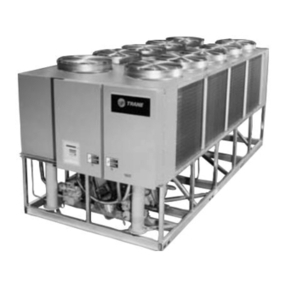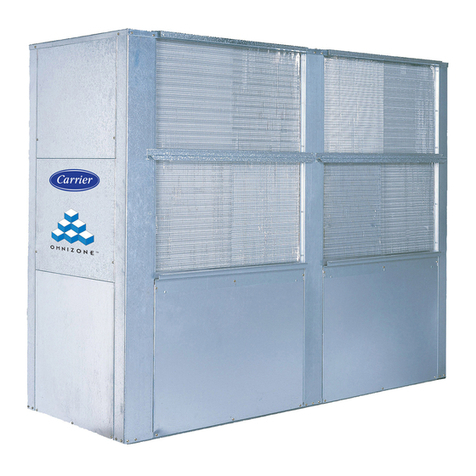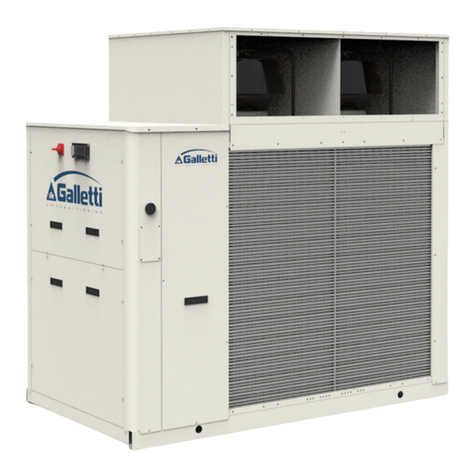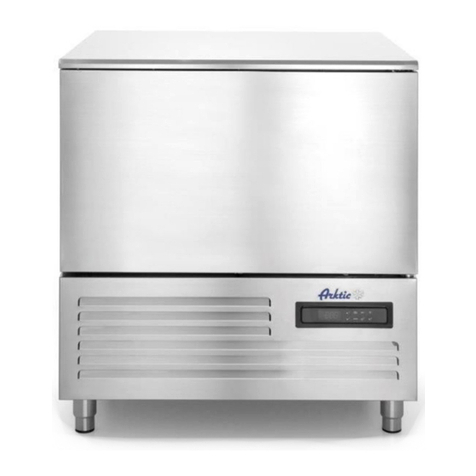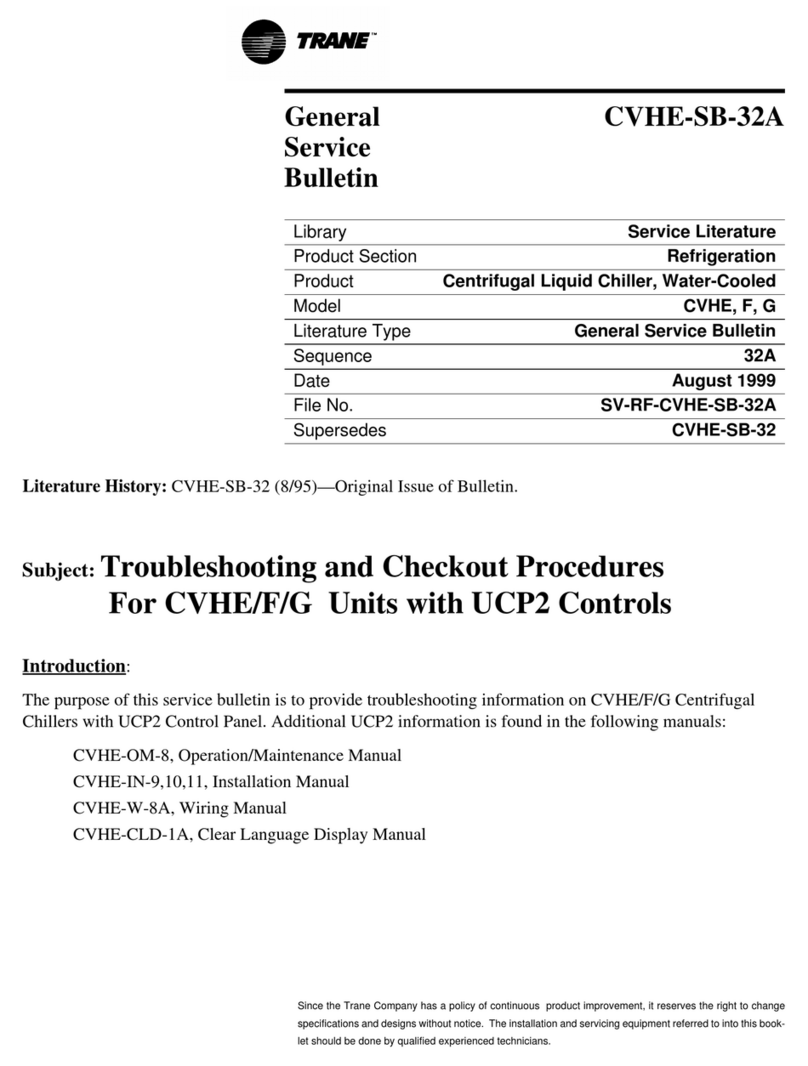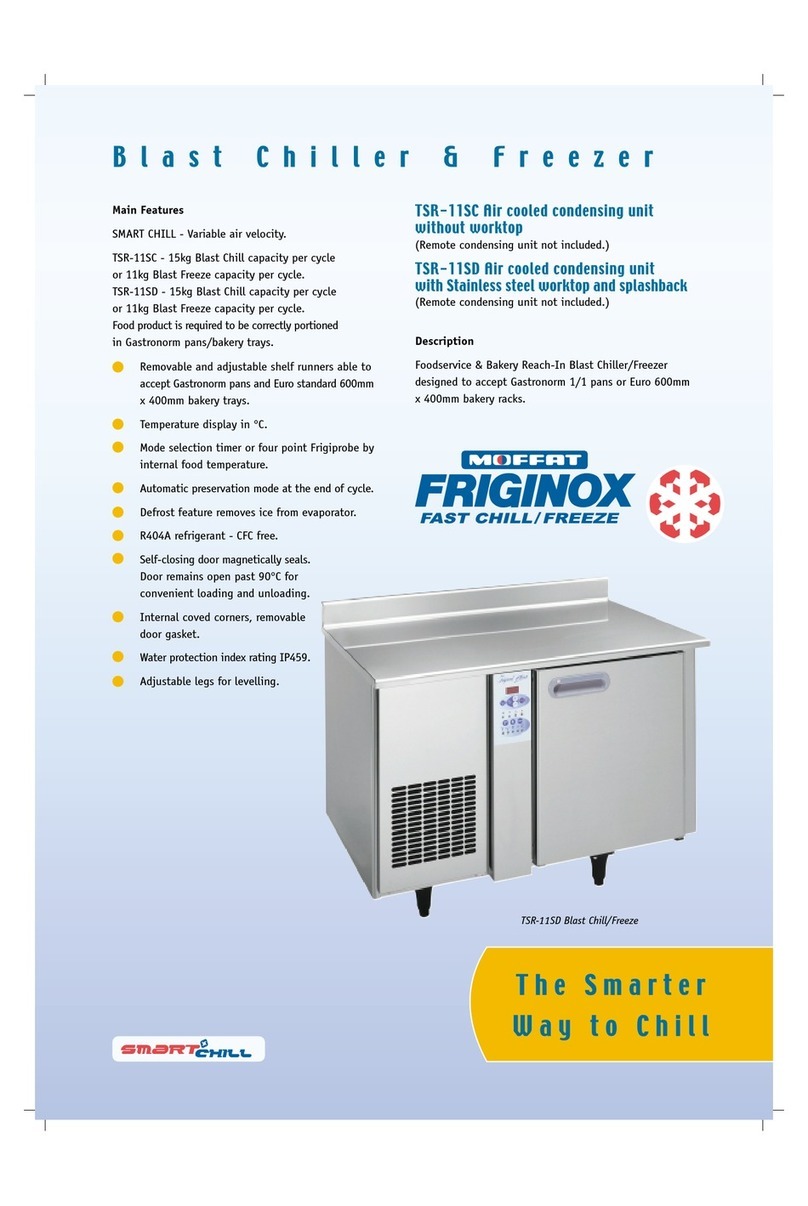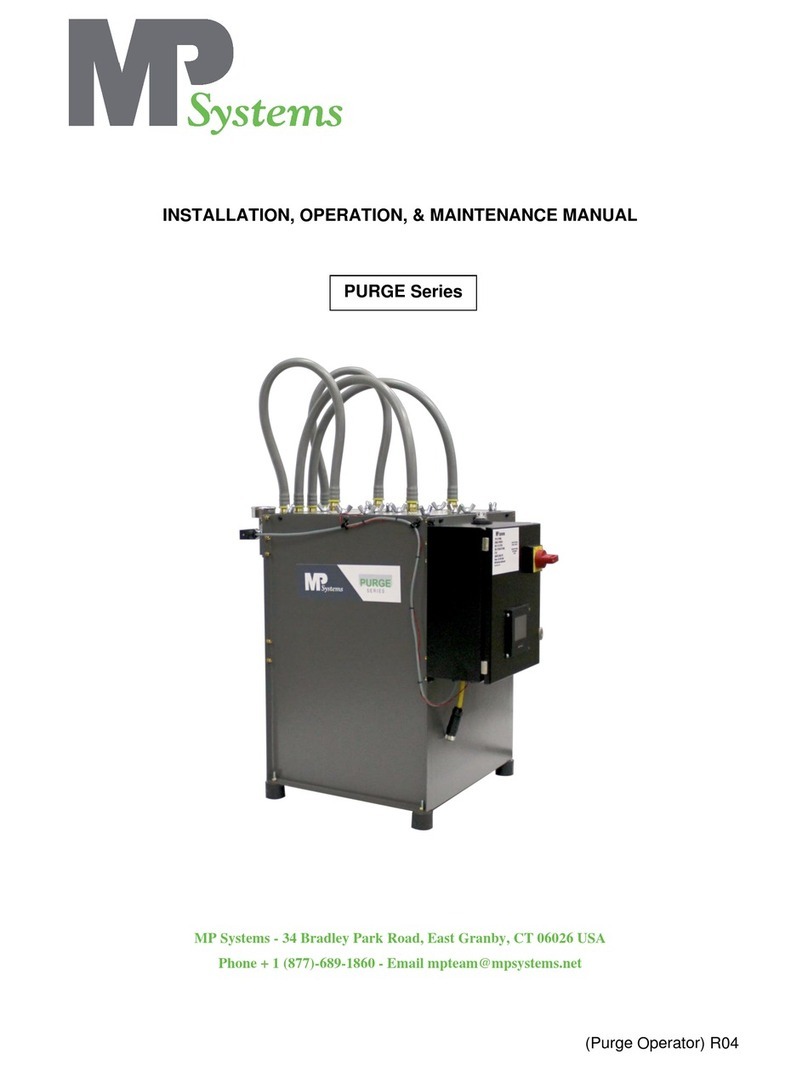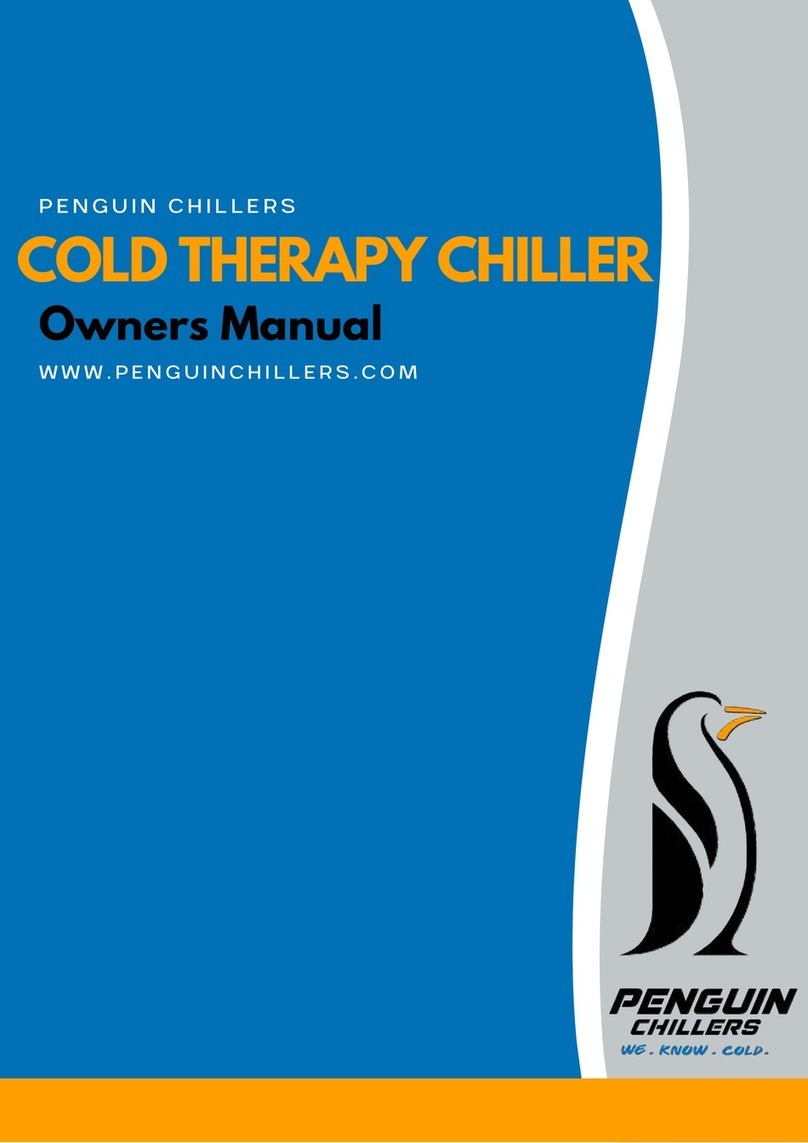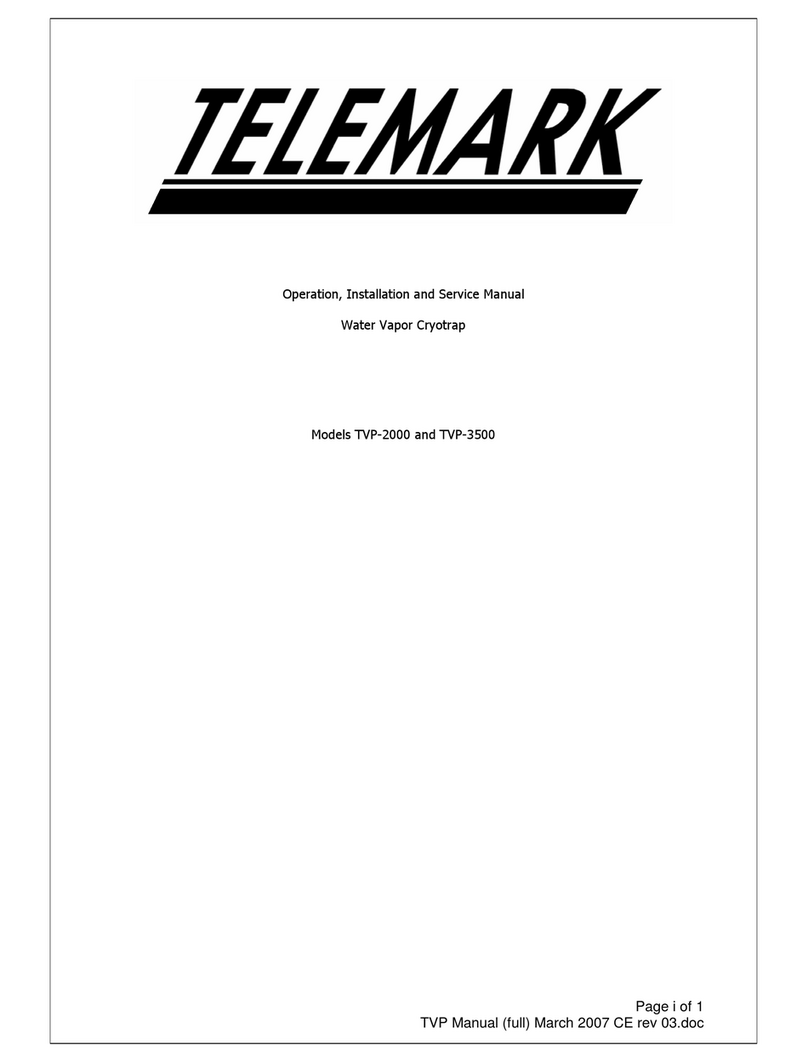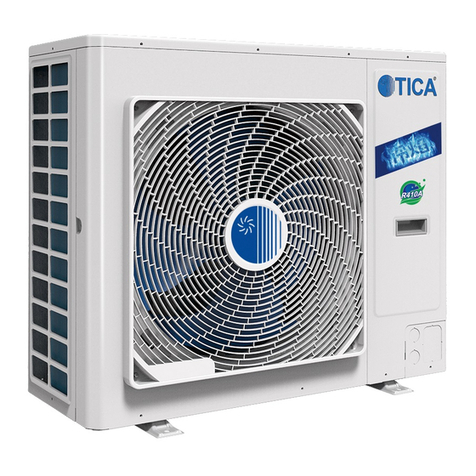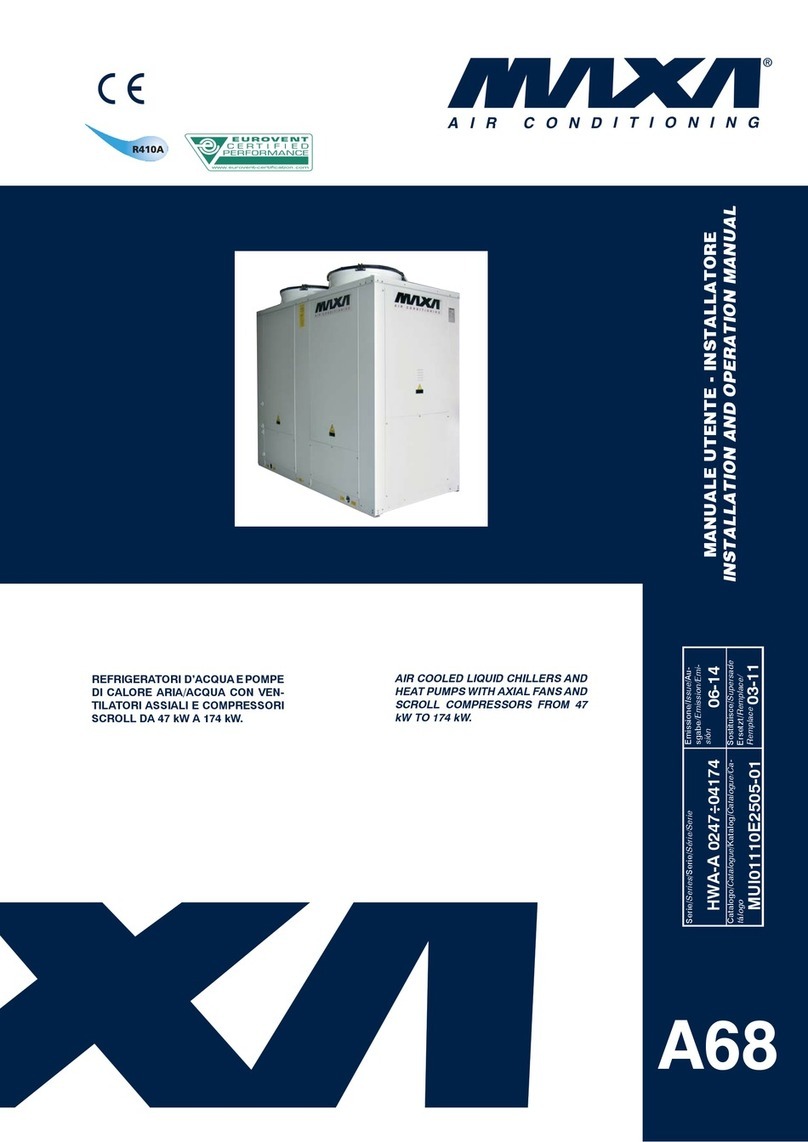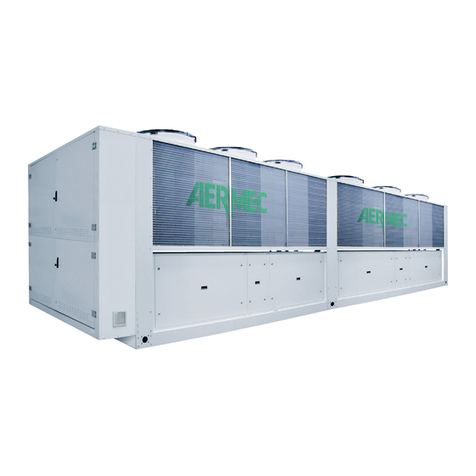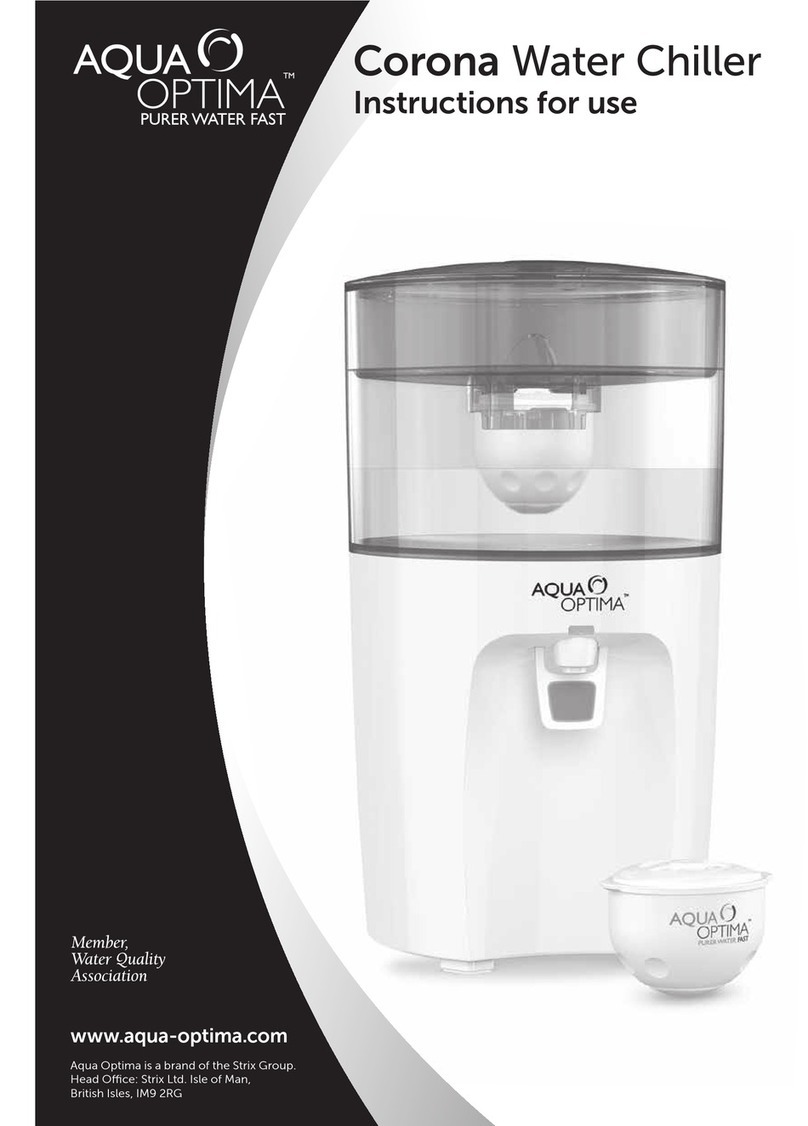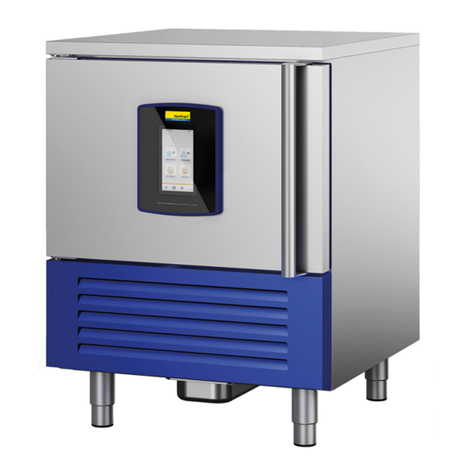
• Hold the DOWN ARROW key
for 4s, the de-
frost
led icon start flashing and fan icons
will be ON and display will show “dEF” label.
• To exit procedure: if end user prefer interrupt the
defrost cycle, press and hold START/STOP key
for 1s, display will show the label OFF and
switch to stand-by mode .
NOTE: For correct DEFROST is recommended keep
the door open during the cycle. Also with open door
the evaporator fan always run
6.1. BLAST CHILLING AND FREEZING FUNCTIONALITY
Blast Chilling and Freezing cycle have two main
working option: controlled by temperature or by
time:
• If operator chooses TEMPERATURE cycle op-
tion, temperature will be detected by needle
probe “Pb2” and cycle will end once needle probe
reaches the pre-setting temperature accord-
ing to value of parameter +3°C for chilling and
-18°C for freezing. After cycle ends the device
will switch automatically to “storage mode” that
will keep the stored food at a pre-setting tem-
perature: chilling +1°C; freezing -22°C until the
storage mode status will be ending by pressing
START/STOP key .
During the temperature cycle the display will
show always the value of needle probe temper-
ature “Pb2”. Once storage cycle starts the dis-
play will show the value of chamber temperature
“Pb1”.
NOTE: End user can modify the pre-setting end-
ing needle probe temperature: (AFTER CYCLE SE-
LECTION but BEFORE PRESSING START/STOP key
). Press and release the UP or DOWN
keys before start the cycle, the display will
show the new value of set point of temperature.
Then press START/STOP key for let item start
the cycle with new value of set point.
• If operator chooses TIME cycle option, tempera-
ture will be detected by chamber probe “Pb1” and
thermostat display will show pre-setting time cy-
cle of 120 Min. for chilling and 280 Min. for freez-
ing.Oncechamber temperature reachesa pre-set
value of +3°C for chilling and -18°C for freezing
the compressor will stop. Cycle will end once the
pre-setting duration cycle time will reach 0 min.
After ending cycle the device will enter in a
“storage mode” that will keep the stored food at
pre- setting temperature according to the value
of parameter: chilling +1°C; freezing -22°C
until the storage mode status will be ending by
pressing START/STOP key .
During the time cycle the display will show the
time left to finish the cycle. Once storage cycle
starts the display will show the value of chamber
temperature “Pb1”.
NOTE: End user can modify the pre-setting time
as follow: (AFTER CYCLE SELECTION but BEFORE
PRESS START/STOP key ). Press and release
the UP or DOWN
keys before start the
cycle, the display will show the new value of set
point of time. Then press START/STOP key
for let item start the cycle with new value of time.
6.2. POSSIBLE OPERATION CYCLES:
• TEMPERATURE CHILLING CYCLE (Needle probe
Pb2)
• TIME CHILLING CYCLE (Room probe Pb1)
• TEMPERATURE -25° CYCLE (Needle probe Pb2)
• FROST BUST CYCLE (Inf) (Room probe Pb1)
• TEMPERATURE FREEZING CYCLE (Needle probe
Pb2)
• TIME FREEZING CYCLE (Room probe Pb1)
9
EN
